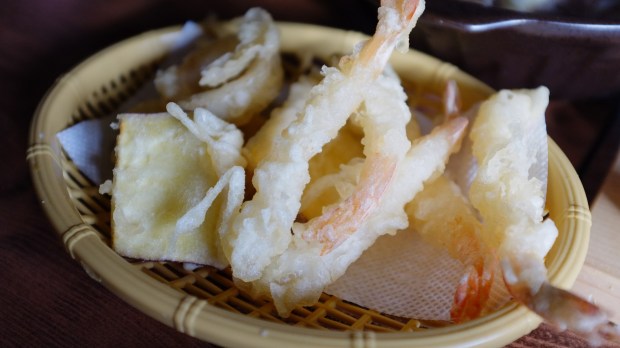When you order tempura in a Japanese restaurant, you might be surprised to learn that your meal originated in Catholic fasting practices.
The popular dish comes from Portuguese Lenten food that Iberian Catholic missionaries and traders introduced in Japan during the 16th century.
The typical Japanese recipe, usually consisting of battered and deep-fried seafood and vegetables, is a version of the traditional Portuguese Peixinhos da Horta (literally “little fishes from the garden”), a dish consisting of bell peppers, squash, and green beans fried in a flour-based batter. The many colors of the vegetables resemble colorful fish in a tank, hence its name.
In his Tracking Down Tempura, Takashi Morieda explains Peixinhos were introduced in Japan by Portuguese sailors, where it eventually developed into tempura. Portugal and Japan started trading in 1543, the Portuguese being the first Europeans to reach the island(s). The period is often referred to as the Nanban Trade Period, in which the port of Nagasaki, through the initiative of the famed Jesuit Gaspar Vilela and the Japanese daimyo (feudal lord) Omura Sumitada (who had converted to Christianity) was ceded to the Society of Jesus.
From Peixinhos to Tempura
Before the arrival of the Portuguese, Japanese deep-fried food was either made without breading or batter, or slightly covered with some rice flour. After Sumitada’s conversion, with the increasing influence of the Jesuits and of European culture in general, peixinhos became more and popular, especially during Lent. Being a meat-less meal, it fulfilled the fasting and abstinence rules for Ember Days and for Lent.
Ember Days are quarterly periods of prayer and fasting in the liturgical calendar. These fasts traditionally take place on the Wednesday, Friday, and Saturday following St. Lucy’s Day (December 13), the first Sunday in Lent, Pentecost, and Holy Cross Day (September 14), although some areas follow a different pattern. The Latin for Ember Days is quatuor tempora, meaning four seasons. Portuguese (and Spanish) missionaries would invite the converted Japanese to fast during these tempora, eating peixinhos; that is, to eat tempura food, food fit for the tempora in the liturgical calendar.
The term soon gained popularity in southern Japan and became widely used to refer to any sort of food prepared using hot oil, battered or not.


